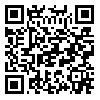Introduction & Objective: Supra condylar humeral fractures are frequent in children at 5-8 years old and its neurovascular complications are more than other fractures. Treatment of displaced fractures (type3) is surgical with open reduction and internal fixation, through posterior, medial, lateral or anterior approach. This study is performed for comparison of the effect of posterior or lateral approach over range of movement of elbow in type 3 supra condylar humeral fractures that were treated with open reduction and internal fixation.
Materials & Methods: This study was clinical trial and the studied subjects were consisted of 50 patients at 5-12 years old with type 3 of supra condylar humeral fractures. Patients were operated randomly by one of posterior or lateral approaches. Average range of movement of operated elbows in each group were measured post operatively 3 times and compared with un-injured elbows at the same patient. Information was analyzed using t-test and SPSS soft ware.
Results: Our findings showed that average range of movement at operated elbows in comparison with normal elbow at 3rd and 6th wks post operatively were meaningfully better in elbows operated through lateral approach (p=0.002) but at 12th week of postoperative the average range of motion at both groups did not have any meaning full statistical difference (p=0.4).
Conclusion: The lateral approach does not have any superiority over posterior approach in post operative limitation of range of movement of elbows. However due to simplicity and lesser neurovascular complication posterior approach is better than lateral approach.
| Rights and permissions | |
 |
This work is licensed under a Creative Commons Attribution-NonCommercial 4.0 International License. |


